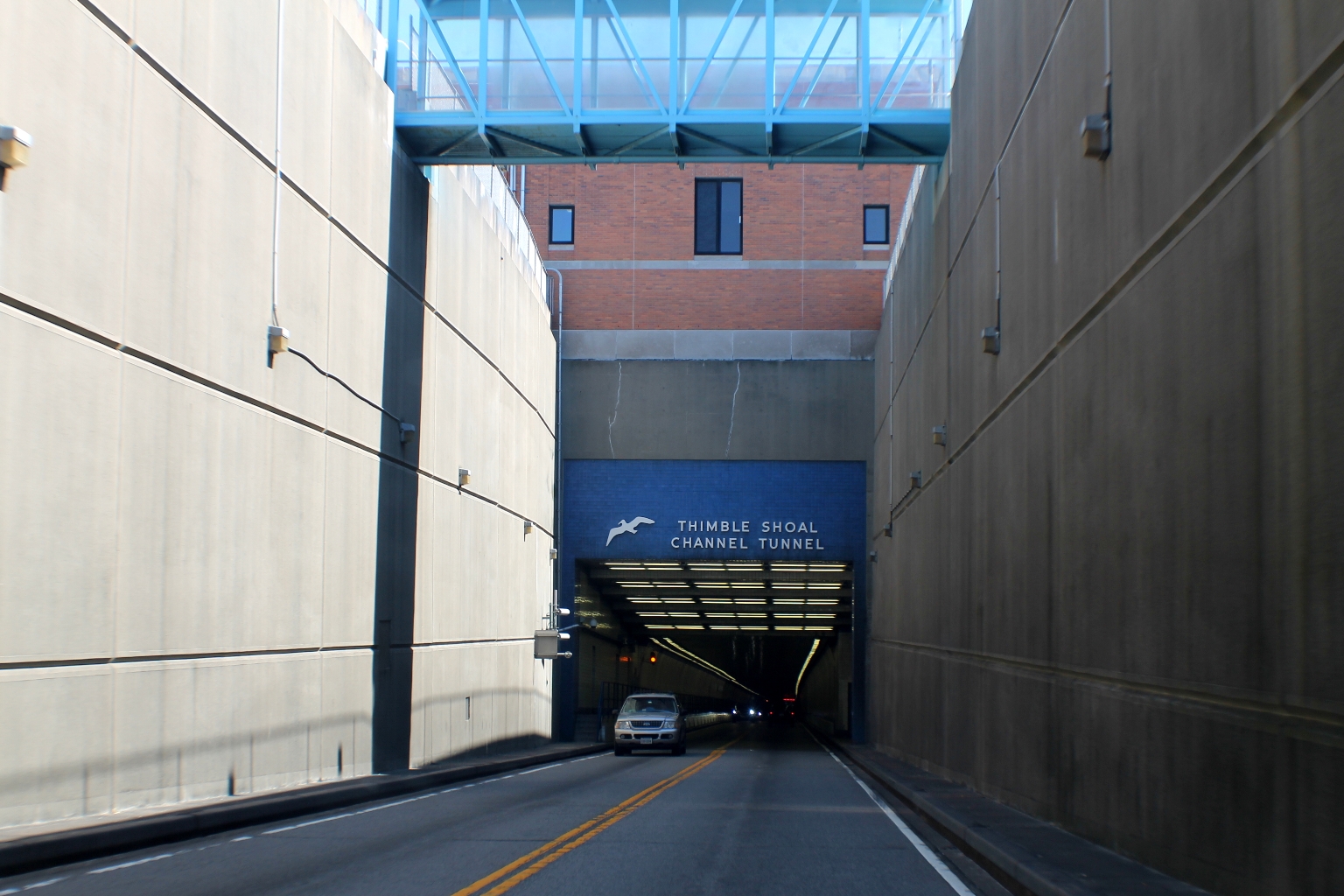

#Inside chesapeake bay bridge tunnel plus#
Because of the depths of the dives, Reed was always subject to the "bends" and after every dive was rushed to the on-site decompression chamber.īecause Reed’s job was so hazardous he was paid the substantial salary of $15,000 per year, plus one dollar per foot per dive, a great deal of money during the height of the Great Depression. On another dive Reed was forced to cut his lifeline, which had become entangled on a cable at the bottom of the Bay. During one particularly dangerous dive, he straightened a leaning caisson by igniting a dynamite charge to clear an underwater obstruction. These skills were developed during his twenty-one years of underwater inspection experience. He used his hands and fingers instead as a guide. Because he worked at such depths, Reed had no light to aid his inspection. Reed made inspection dives of up to 240 feet with equipment that he designed. Master Diver William Reed held the job of underwater inspector. Once on bedrock, crews could begin construction of the massive towers on top of the piers.Ĭritical to the construction of the Bay Bridge was the ability to secure the underpinnings of the bridge. His technique allowed the piers to sink through up to 170 feet of mud to the bedrock beneath the Bay.
#Inside chesapeake bay bridge tunnel series#
Daniel Moran conceived of a system that involved sinking caissons (water-tight chambers) made up of a series of domed cylinders to form the foundation for each pier. Project engineers therefore had to develop an innovative new method for constructing the piers upon which the bridge would stand. Some sense of the scale can be determined by noting the ferry in the left-hand corner of the picture.Ĭonstruction was further complicated by the depth of the water, reaching one hundred feet in places. The anchorage, seen in the upper right-hand photograph, was the equivalent of a 40-story building covering an entire city block. Their solution, perhaps the most innovative aspect of the Bay Bridge, was the construction of a massive center anchorage between Yerba Buena Island and San Francisco. Such a distance was too long for a single suspension span, so engineers had to devise a method to anchor not one, but two suspension bridges over the Bay.

This design was necessitated by the 1.8-mile distance between Yerba Buena Island and San Francisco's shoreline. The western span of the San Francisco-Oakland Bay Bridge is the most visually striking portion of the structure, featuring two suspension bridges connected in the middle by a central pier. The new east span, a suspension bridge with only one deck, opened to traffic in 2013. The eastern span was eventually replaced after a section of the upper deck collapsed onto the lower deck during the 1989 Loma Prieta earthquake. The eastern span was completed six months ahead of the western, suspension portion of the bridge, with crews paving the bridge decks by April 1936. Hydraulic jacks placed the very last section, a maneuver made tricky by winds and tidal flows incessantly shifting the superstructure. Instead, the central section was built out from the ends of the cantilevered portions. Treacherous currents made such a process dangerous and unpredictable. In one of the many innovations that the bridge's engineers had to develop during construction, the central portion of the cantilevered section (in the middle of the photo) was not raised into place from the water, as was typical at the time. This photograph shows the completed eastern span of the Bay Bridge, looking northeast from Yerba Buena Island. Pier E-3, near Yerba Buena Island, had the distinction of being the deepest bridge pier ever built up to that time, at a depth of 242 feet below water level. These photographs show some of the stages in constructing a series of twenty-two support piers for the eastern span of the bridge. The final design consisted of two suspension bridges on the San Francisco side of Yerba Buena Island, a tunnel through the island, and a series of truss and cantilever spans on the eastern portion of the bridge between the island and Oakland's shoreline. Purcell as the project's Chief Engineer, Charles Andrew as Bridge Engineer, and Glenn Woodruff as Engineer of Design. To meet these challenges, the Toll Bridge Authority and the Department of Public Works appointed Charles H. The bridge needed to span more than five miles (four of which are over water) from Oakland to San Francisco, and be able to withstand turbulent tides, strong winds with a high salt content, and potentially devastating earthquakes.


The design and construction of the Bay Bridge was one of the great engineering challenges of the twentieth century.


 0 kommentar(er)
0 kommentar(er)
